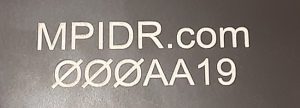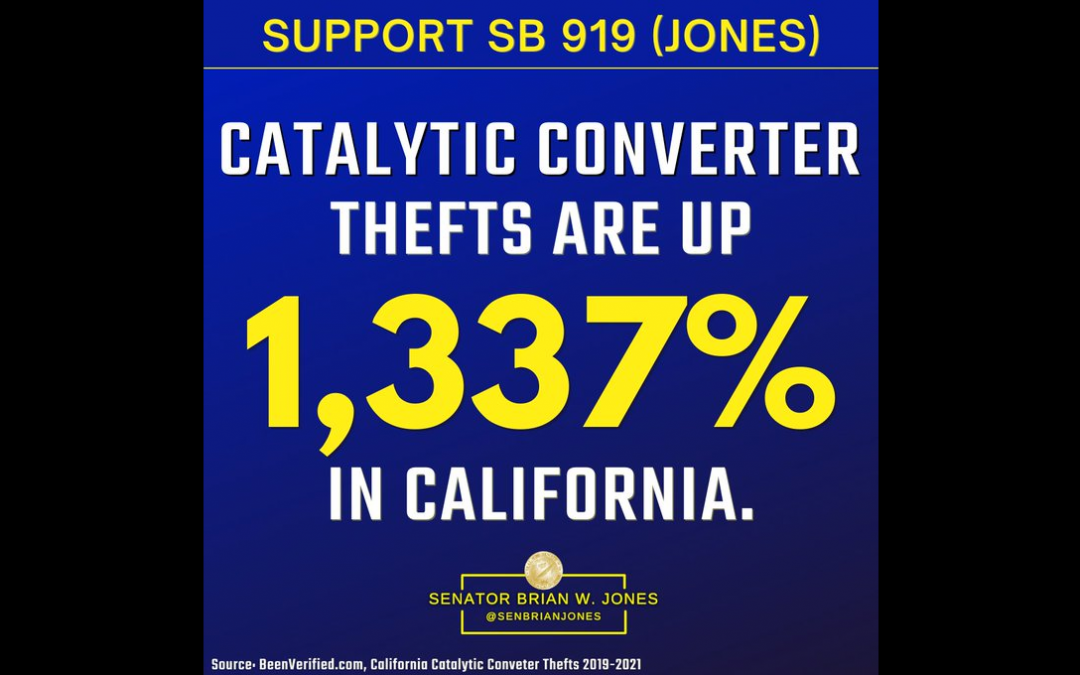Do a search for articles on catalytic-converter thefts and you’ll find stories from every corner of the country. While there are many solutions being offered, the most reliable and cost effective is to etch a globally traceable, alphanumeric string into catalytic converters. That way, the police, salvage yards and law-abiding citizens have a tool for identifying the rightful owner of property.
UII versus UIN
There are two broad ways for tracing property. There is the unique item identifier (UII) such as a vehicle identification number (VIN) or an international mobile equipment identity (IMEI). Then there is the unique identification number (UIN) such as a driver’s license number, a license plate, or a My Property ID Registry alphanumeric string tied to the internet.
https://mypropertyidregistry.com/2019/11/07/uii-is-not-a-uin

Model Legislation
California State Senator, Brian Jones, has introduced legislation requiring that a VIN be etched into catalytic converters.
https://jones.cssrc.us/content/jones-introduces-measure-crackdown-catalytic-converter-theft-california
- New and used motor vehicle dealers would be required to permanently mark the Vehicle Identification Number (VIN) on the catalytic converter of any vehicle before they sell it – this will create a way to identify the catalytic converter if it is illegally removed from the vehicle.
- Metal recyclers would only be allowed to buy catalytic converters that have a clearly visible and untampered VIN on it, and they would have to keep detailed records of who sold them each specific catalytic converter and make those records accessible to law enforcement – this will discourage the current loose practice of selling and buying catalytic converters and cut off the “easy money” thieves currently make.
Here is a link to the PDF of Senator Jones’s model legislation.
https://jones.cssrc.us/sites/default/files/RN2206134_rn2206134_distprint.pdf

